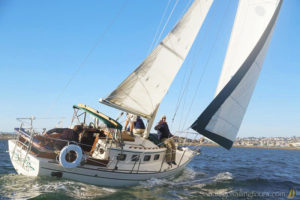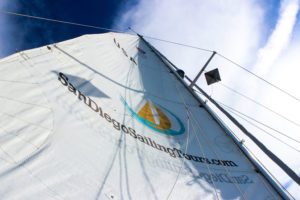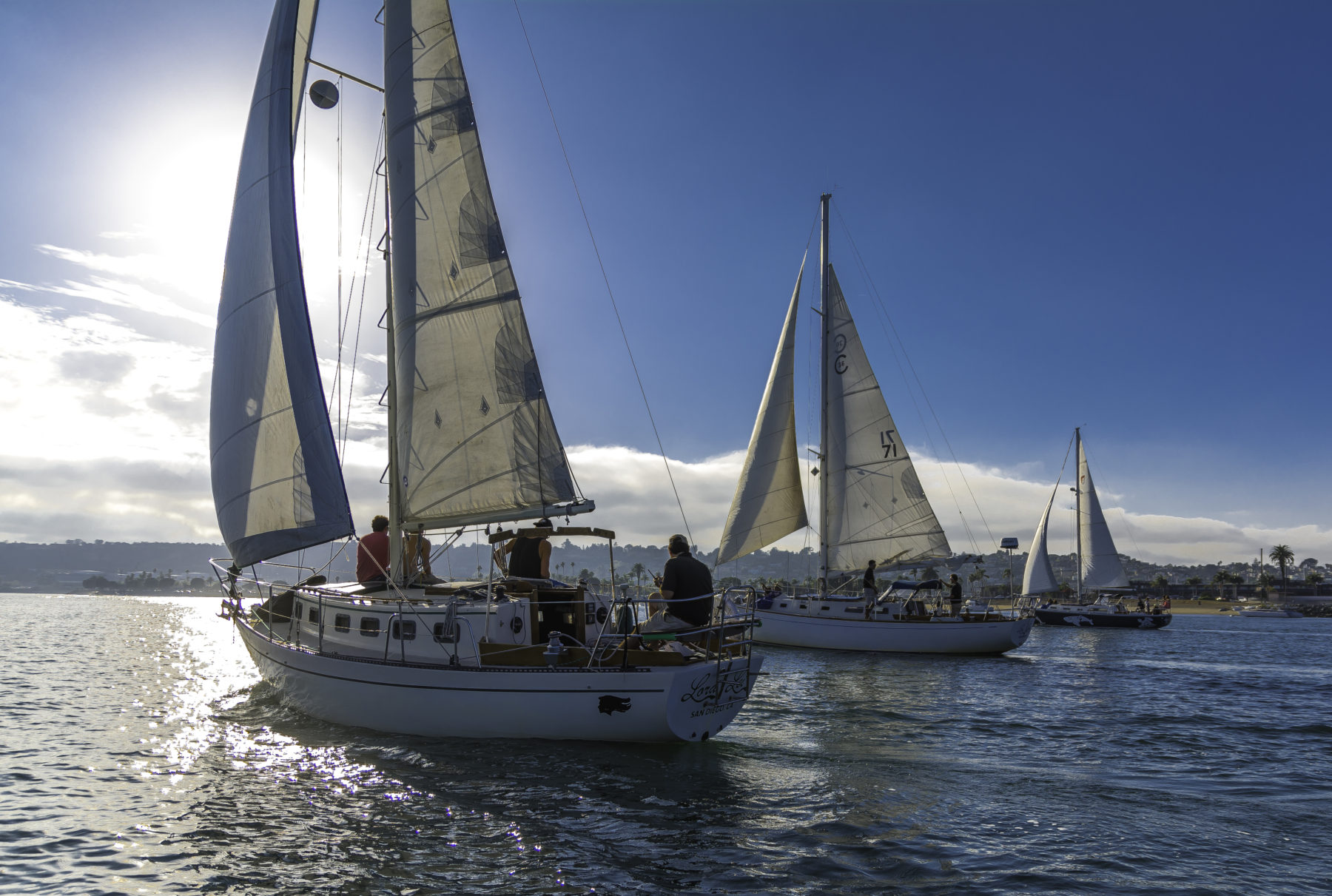One of the most common questions we get here while sailing the San Diego Bay is how to learn to sail. We’re more than happy to help any first-time sailors out on the water learn some of the basic skills it takes to sail under your own power. Here are just a few basic tips to help you get comfortable on the water for your sailing adventure.

First would be the directions used to identify the where your vessel is and where it is going. Forward and aft are your directions for front and back of the vessel. Left and right are going to be referred to as port and starboard, respectively. Keeping these terms in mind is important when you need to describe your situation to other sailors on the water. As far as parts of the vessel, they have similarly-distinctive names. The bow is the front, and the stern is the back; the helm is the place where the captain steers the vessel from, usually located towards the stern on most sailing yachts. Port-side refers to anything on the left-hand side of the vessel, and starboard-side to anything on the right (from the perspective of the helm).

When embarking, you want to make sure that you are moving towards safe waters in which to sail. Most marinas are “no-wake”, meaning that they require departing and returning vessels to make as few waves as possible. This will usually require motoring out of the designated area at a speed of no more than 5 mph. An experienced yachtsman will be able to determine when is the best and safest time to open up the mainsail(s) on a sailing expedition, so it is important to pay attention to the captain’s directions while aboard. Safety is always the first priority aboard any water-craft; giving other vessels the right-of-way and using appropriate signals to communicate will ensure that everyone can enjoy a fun and safe time out on the water


Recent Comments